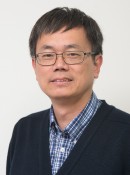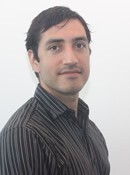CONICYT dio a conocer (3 enero 2018) los resultados del Concurso Fondecyt Regular 2018. En total fueron seleccionados 518 proyectos a nivel nacional, entre los cuales la Universidad de Chile se adjudicó 88 iniciativas con un financiamiento superior a los cinco mil millones de pesos para ejecutarlos en un plazo de 2 a 4 años como máximo.
La Directora de Investigación de la VID, Silvia Núñez, indicó que cada investigación obtendrá 57 millones de pesos por año de realización, para cubrir personal técnico de apoyo; viajes nacionales e internacionales que impulsen colaboraciones con pares en el extranjero; becas para tesistas y memoristas que colaboren en el proyecto; y bienes de capital.
Nuestra Facultad de Ciencias Químicas y Farmacéuticas obtuvo 6 proyectos del total, que recayeron en los profesores Maruja Báez, Mario Chiong, Javier Morales M., Pablo Richter, Paz Robert y Christian Wilson.
Los profesores Chiong, Morales, Richter y Wilson indicaron algunos de los aspectos principales de sus proyectos.
Profesor Mario Chiong: se estudiará si las mioquinas interleukina 6 (IL-6) y miostatina pueden ser sintetizadas por VSMC de las arterias durante el ejercicio y regular el cambio fenotípico de las VSMC a través de un mecanismo autocrino / paracrino
En el caso del profesor Mario Chiong, académico del Departamento de Bioquímica y Biología Molecular, es investigador responsable del proyecto “Autocrine/paracrine interleukin-6 and myostatin control of VSMC differentiation under exercise and resting”. Coinvestigador: Rodrigo Troncoso, INTA, Universidad de Chile. (FONDECYT 1180157). Duración: 2018-2022.
En su descripción se señala: “Las células vasculares de músculo liso (VSMC) son el componente principal de la capa media de las arterias. Las VSMC pueden pasar de un fenotipo diferenciado (contráctil, no proliferativo, no migratorio) a uno desdiferenciado (proliferativo, migratorio). Este cambio fenotípico ocurre en la aterosclerosis, hipertensión, reestenosis y formación de neoíntima. Sin embargo, este cambio fenotípico también ocurre en el ejercicio, y se asocia con salud cardiovascular. El ejercicio induce la síntesis y secreción de las hormonas mioquinas desde músculo esquelético. Las mioquinas son responsables de la adaptación metabólica y estructural del organismo al ejercicio.
Según indicó el profesor Chiong, “en el proyecto Fondecyt se estudiará si las mioquinas interleukina 6 (IL-6) y miostatina pueden ser sintetizadas por VSMC de las arterias durante el ejercicio y regular el cambio fenotípico de las VSMC a través de un mecanismo autocrino / paracrino”.
Profesor Javier O. Morales: busca desarrollar nanocarriers que puedan ser absorbidas a través de la mucosa bucal (revestimiento interior de las mejillas) y que una vez en circulación sanguínea desplieguen características superficiales que resulten en una dirección activa hacia el corazón
El proyecto del profesor Javier O. Morales se titula “Development of a dual acting nanocarrier for enhanced buccal permeation followed by bioresponsive cardiac targeting: formulation studies and biological proof of concept”. De acuerdo a lo que señaló “busca desarrollar nanocarriers que puedan ser absorbidas a través de la mucosa bucal (revestimiento interior de las mejillas) y que una vez en circulación sanguínea desplieguen características superficiales que resulten en una dirección activa hacia el corazón.
El grupo de investigación está liderado por el profesor Javier O. Morales Montecinos, académico del Departamento de Ciencias y Tecnología Farmacéuticas, y como co-investigadores los profesores Felipe Oyarzún, del mismo departamento; Lorena García, del Departamento de Bioquímica y Biología Molecular; y Marcelo Kogan, académico del Departamento de Química Farmacológica y Toxicológica, junto con colaboradores de la Universidad de Würzburg en Alemania y Fraunhofer Chile.
Especifica el profesor Morales que “los nanocarriers (pequeñas partículas cargadas con fármacos) han sido ampliamente investigados y una de sus características es su potencial para ser dirigidos selectivamente a dianas terapéuticas. Aunque este concepto aún se encuentra en etapa de uso clínico, el problema futuro de la nanomedicina será transformar estos nanocarriers que sólo pueden ser administrados por medio de inyectables, a formas farmacéuticas amigables”. Agrega que “este aspecto ha sido un objetivo de nuestro grupo de investigación y lo hemos abordado por medio de la ruta bucal (revestimiento interior de las mejillas) como una vía con ventajas sobre la ruta oral y más amigable que inyectables. Así, este proyecto propone desarrollar un sistema de entrega de fármacos que permita la absorción bucal de nanocarriers que posteriormente sean dirigidos específicamente a una diana terapéutica modelo (en este proyecto el modelo es el corazón)”, indica.
Para lograr este objetivo, el grupo investigador combinó una investigación previa que desarrolló la tecnología para fabricar películas cargadas con nanocarriers por medio de impresión por inyección de tinta con un nuevo concepto del diseño de los nanocarriers. “Por medio de la impresión, los nanocarriers están dispuestos en la inmediatez de la mucosa bucal para lograr una permeación potenciada. El nuevo diseño de los nanocarriers además permite que en una primera fase su cubierta esté optimizada para el proceso de absorción, y una vez en la sangre, se despliegue su característica de targeting al corazón. Así, esperamos que los resultados de esta investigación impacten el campo de la nanomedicina, permitiendo el desarrollo de nuevos medicamentos capaces de ser administrados por una ruta no-inyectable y que permitan dirigir selectivamente el fármaco a su diana”, comenta Morales.
Profesor Pablo Richter: los aspectos novedosos están relacionados, por una parte, con la implementación de técnicas de microextracción y con la determinación simultánea de varios EDC junto con las hormonas sexuales más importantes
“Analytical developments in sample preparation for isolation and multi-determination of biomarkers by chromatographic techniques coupled to mass spectrometry” es el título del profesor Pablo Richter, académico del Departamento de Química Inorgánica y Analítica.
En el resumen del proyecto se indica: “La detección y cuantificación de biomarcadores en un organismo es cada vez más importante para el diagnóstico más certero, la prevención y el seguimiento de ciertas enfermedades. En este proyecto proponemos desarrollar nuevas estrategias analíticas que mejoren la calidad de la mediciones (bio-)químicas en este ámbito, sumistrando información más fiable para resolución de problemas relacionados con la salud”.
Agrega el resumen que “El desarrollo de nuevos procesos analíticos para la determinación de biomarcadores es un desafío, teniendo en cuenta las dificultades al medir bajas concentraciones de analitos en matrices biológicas complejas, lo cual hasta ahora se logra principalmente mediante mediciones analíticas de screening (inmunoensayos). En el proyecto nos enfocaremos en el estudio de muestras biológicas que contengan tres familias de biomarcadores, todos ellos interrelacionados con la regulación de las funciones reproductivas de los mamíferos: (a) kisspeptinas, (b) hormonas sexuales y (c) algunos compuestos disruptores endocrinos (EDC). Los contenidos de kisspeptina y hormonas sexuales en fluidos biológicos son biomarcadores útiles para diagnóstico, mientras los EDC son clasificados como biomarcadores de riesgo de la exposición. Esperamos que el diseño y la implementación de estrategias de microextracción para la determinación de estos biomarcadores en muestras biológicas (plasma, orina) junto con determinación por cromatografía (GC y LC) acoplada a espectrometría de masas (MS) proporcionará resultados con calidad mejorada (cifras de mérito) en comparación con los obtenidos a partir de metodologías previamente informadas, basadas en extracción líquido-líquido y extracción en fase sólida o de métodos de detección, como ELISA, EIA o RIA. Los aspectos novedosos cubiertos en este proyecto están relacionados, por una parte, con la implementación de técnicas de microextracción antes de la determinación cromatográfica de kisspeptinas por UHPLC-TOF / MS, que hasta ahora no se ha informado, y por otro lado, con la determinación simultánea de varios EDC junto con las hormonas sexuales más importantes, ya que los estudios previamente publicados de biomonitorización de EDC se centran principalmente en un biomarcador de exposición específico. Se llevarán a cabo evaluaciones en sistemas in vivo.
Profesor Christian Wilson: En particular estudiaremos una proteína que se llama BiP, que es considerada el regular maestro del retículo endoplásmico al interior de la célula
El profesor Christian Wilson, académico del Departamento de Bioquímica y Biología Molecular indicó que “estamos estudiando las propiedades mecánicas de las proteínas. En particular estudiaremos una proteína que se llama BiP, que es considerada el regular maestro del retículo endoplásmico al interior de la célula. Esta proteína, su mal función ha sido implicada en enfermedades neurodegenerativas (alzheimer, parkinson) y cáncer”. Agrega el profesor Wilson que “este proyecto quiere entender cómo los cambios en estas propiedades mecánicas, y cómo las fuerzas que ejercen las proteínas son esenciales para generar su función”. Añade que “para llevar a cabo el proyecto, propusimos armar un instrumento que sería el primero en el país de nanorreología. Este instrumento permite determinar movimientos a escalas muy pequeñas y ver cambios en la elasticidad de proteínas. Además seguiremos trabajando con nuestro instrumento de pinzas ópticas, para ver a nivel de moléculas individuales cómo las chaperonas ayudan en su función”.
Este Fondecyt es en colaboración con el profesor Mauricio Báez, académico del mismo departamento de esta Facultad con los profesores Giovanni Zocchi y Randy Schekman, ambos de la Universidad de California.
El profesor Wilson resalta que éste fue un trabajo con el equipo de su laboratorio, en particular Hilda M. Alfaro-Valdés y Diego Quiroga-Roger quienes ayudaron en la escritura y en las ideas. Agrega que “Nathalie Casanova-Morales me ayudó a obtener data adelantada desde la Universidad de California en Los Angeles del instrumento de nanorreología que ellos inventaron. Allí estuvimos trabajando desde un tiempo atrás para tener data que mostrar en el proyecto, para demostrar factibilidad de hacerlo. En resumen, es un proyecto que lo vengo pensando hace harto tiempo, y me he dedicado a armarlo de a poco, para que al momento de presentarlo se note solidez y coherencia”.





